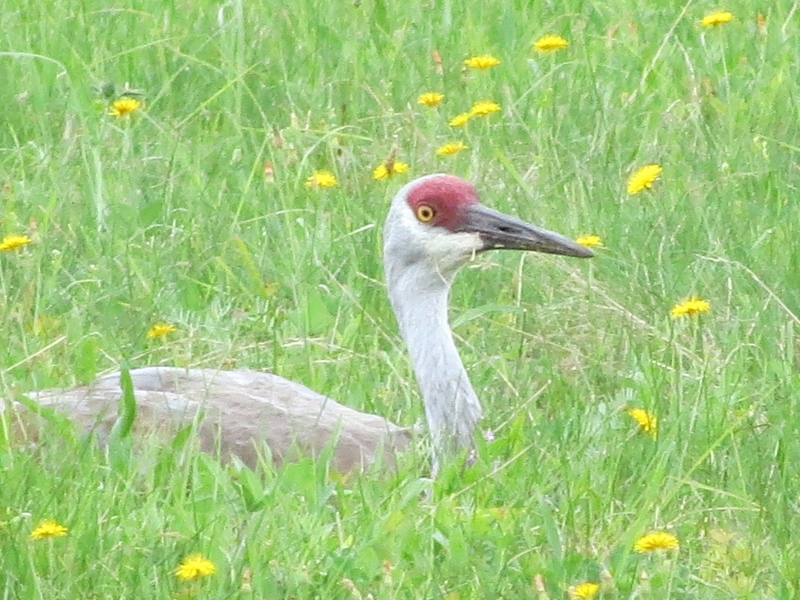
Summering in Tupper Lake!
Exciting Bird News!
A pair of Sandhill Cranes made Tupper Lake their home this summer much to the delight of birders, photographers, and wildlife enthusiasts! Word quickly spread in the birding world during early July when people first began to observe the elegant cranes. Most of the sightings have been in the vicinity of the Raquette River and Simon Pond.
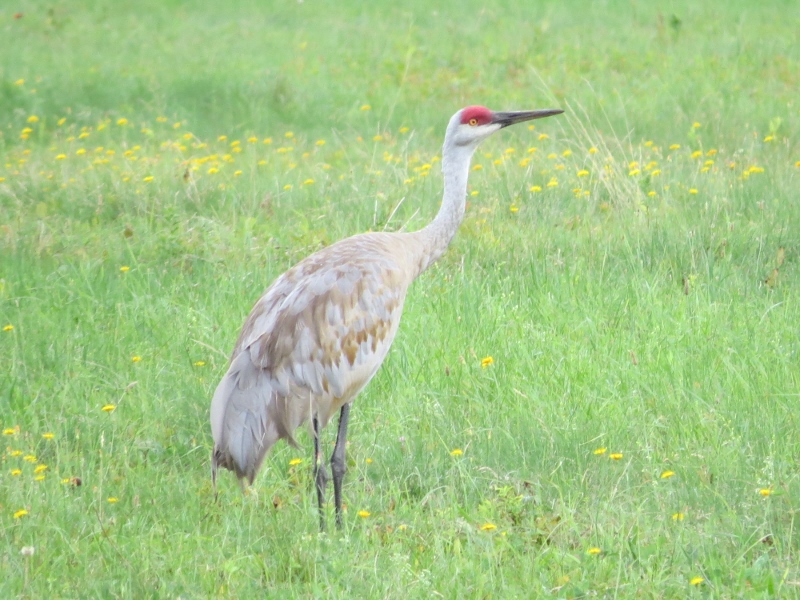
I was fortunate to spot the Sandhill Crane pair on the afternoon of August 26, 2015 in the middle of a field along Stetson Road not far from the Wild Center. Grabbing my camera, I steadied my body against a tree along the road, and zoomed the lens all the way in on the cranes. They stayed close together as they foraged in the grassy, mowed field. One of the cranes laid down to rest, but continued foraging by snapping at butterflies and other nearby flying insects as it rested. The other crane foraged around its resting partner. They remained close together throughout the time I observed them.
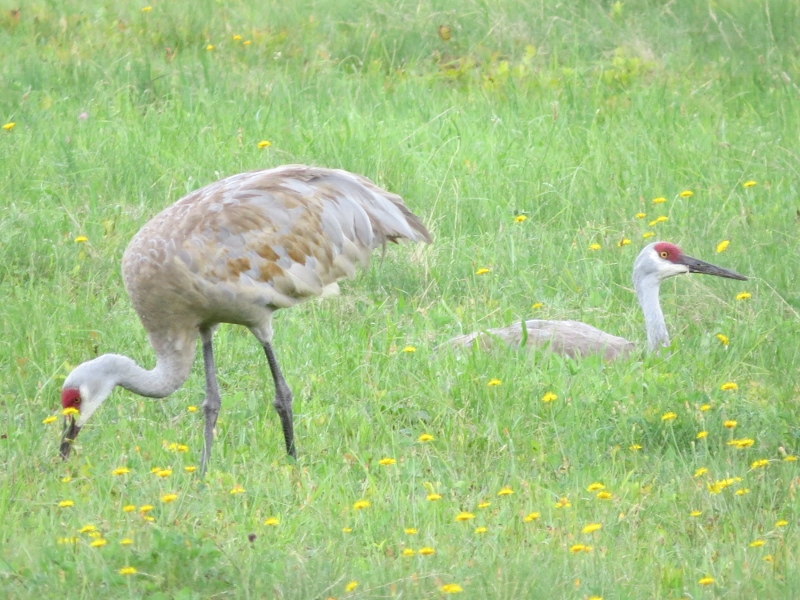
A Relatively New Species for New York
The first breeding record for Sandhill Crane (Grus canadensis) in New York was established on June 5, 2003, when a pair of cranes with a chick was spotted in the North Montezuma Management Area in Central New York.
There are 15 crane species in the world, and unlike most of them, the Sandhill Crane populations are stable or increasing. Large increases in crane populations have been documented in Michigan and Ontario in the last 20 years, which are likely the sources of cranes in New York. Pennsylvania’s first documented breeding record for Sandhill Crane was in 1993. The Sandhill Crane breeding range continues to expand eastward from the mid-west.
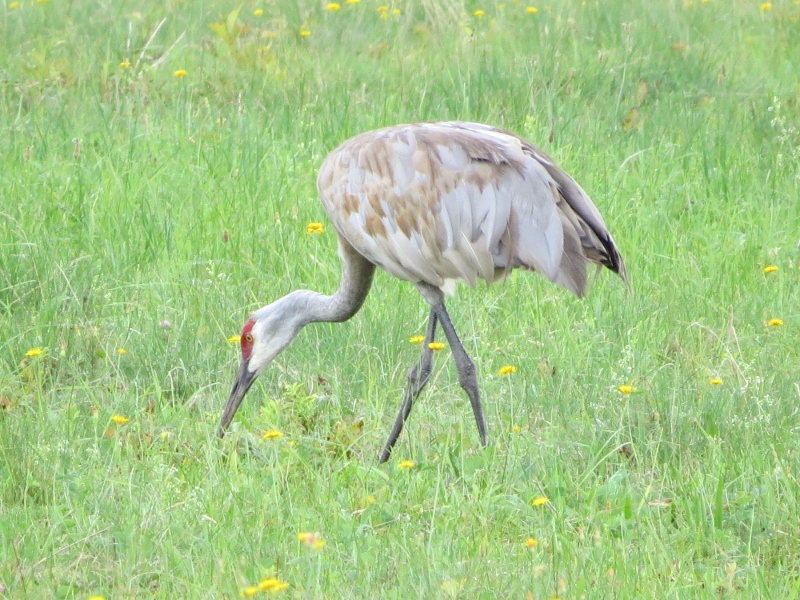
Habitat Requirements and Interesting Facts
Sandhill Cranes need open grasslands, meadows, and wetlands. They nest in moist habitats like marshes, bogs, or wet meadows surrounded by shrubs or trees. Standing water with growing vegetation is preferable. Their large nest is a heap of plant material with a hollow area in the middle. Sandhill Cranes can begin mating at 2 years of age, but may be as old as 7 years before they begin mating. They mate for life and stay with their partner year-round. The female typically lays two eggs, but usually only one nestling survives to fledge.
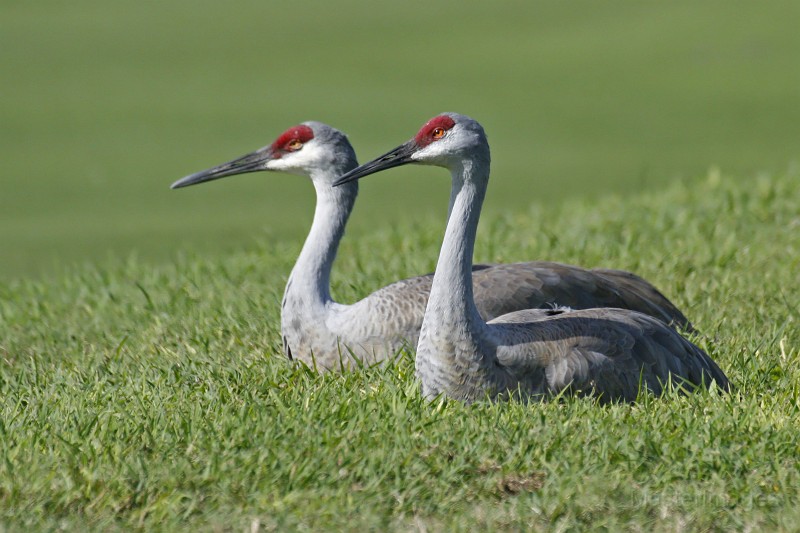
The oldest documented Sandhill Crane was more than 36 years old!
Sandhill Cranes are omnivorous. They eat seeds, cultivated grains, berries, tubers, small vertebrates, and invertebrates.
The famous vocalization of the Sandhill Crane is a loud, rolling, trumpeting sound due to a long trachea that coils into the bird’s sternum.
The cranes are also known for their mating dances. They stretch their wings, pump their heads, bow, and gracefully leap into the air.
Crane species are the largest of all flying birds on Earth.
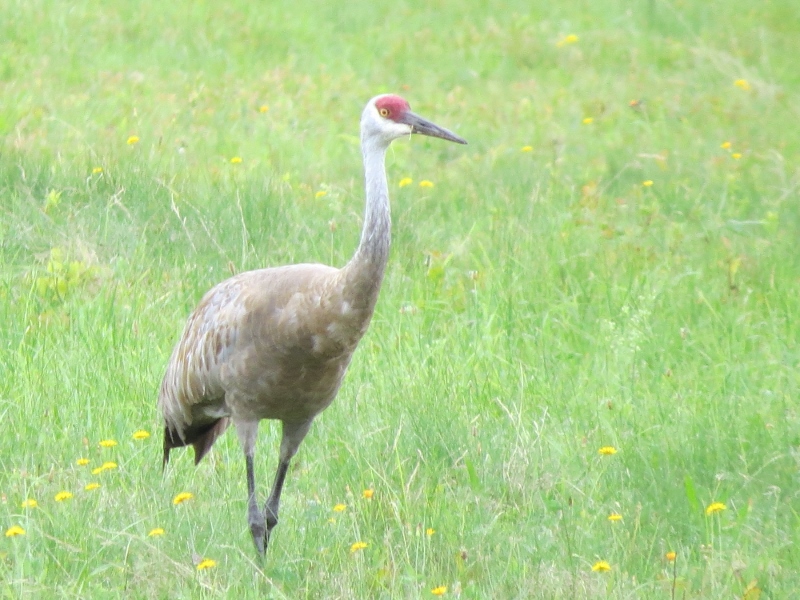
Hundreds of thousands of Sandhill Cranes can fill the sky during migration.
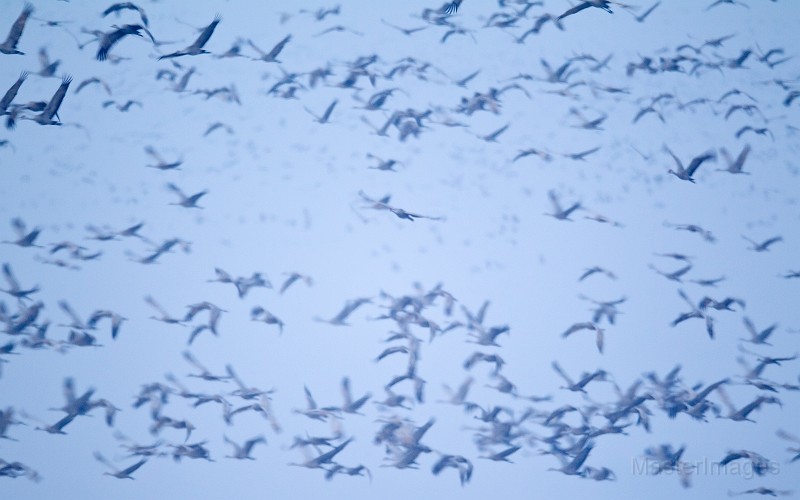
Sandhill Cranes winter in the southern U.S. and northern Mexico.
Mythology and Symbolism
The beauty, size, and graceful dances of cranes have left a mark on human culture going back to ancient times. They show up in the earliest legends where they are often portrayed as sentinels of heaven and omens of longevity and good fortune. In Asia, they are a symbol of happiness and eternal youth. The crane is a mystical or holy creature in Japan where it symbolizes good fortune and longevity because of its fabled life span of a thousand years. Greek and Roman myths portrayed the dances of cranes as a love of joy and a celebration of life. The dances of cranes have also inspired Kung Fu movements and human dances. Cranes are a favorite subject of Japanese origami. An ancient Japanese legend states that if a person folds 1,000 origami crane figures, they will be granted a wish by a crane!
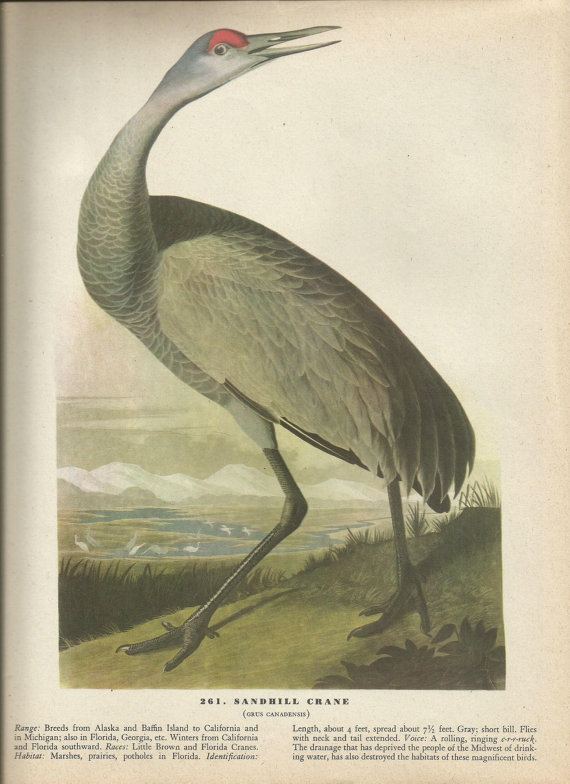
Conservation
Many crane species are threatened or endangered. Organizations like the International Crane Foundation formed to help study and conserve the 15 species of cranes across the world. Protecting cranes, with their broad wilderness habitat requirements, and enormous migration spans, ensures that other creatures and the earth and water of the ecosystem are also protected.
Tupper Lake Sandhill Cranes
Will the migratory pair of Sandhill Cranes return to Tupper Lake next spring? If they survive on their winter grounds, it is likely. If they do return, will they eventually nest in the wetlands along the Raquette River? Stay tuned!
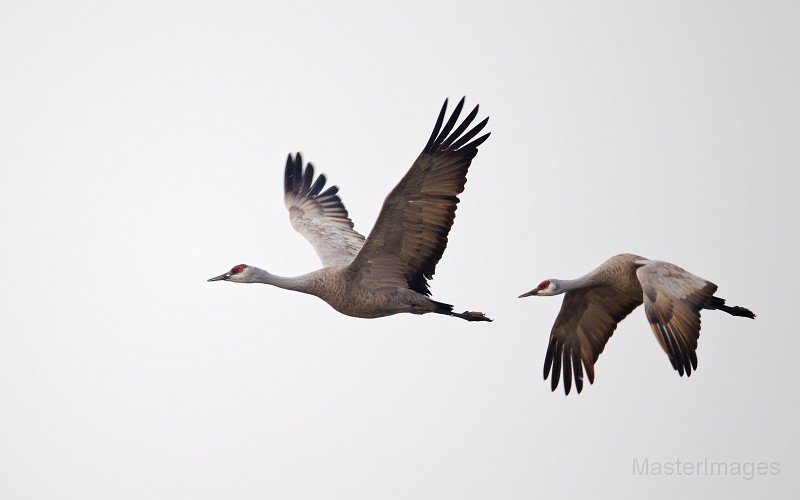
The Sandhill Cranes will likely migrate in October. If you plan a visit to see the cranes, or other wildlife in the Tupper Lake region, there are pleasant accommodations and restaurants in the area.
